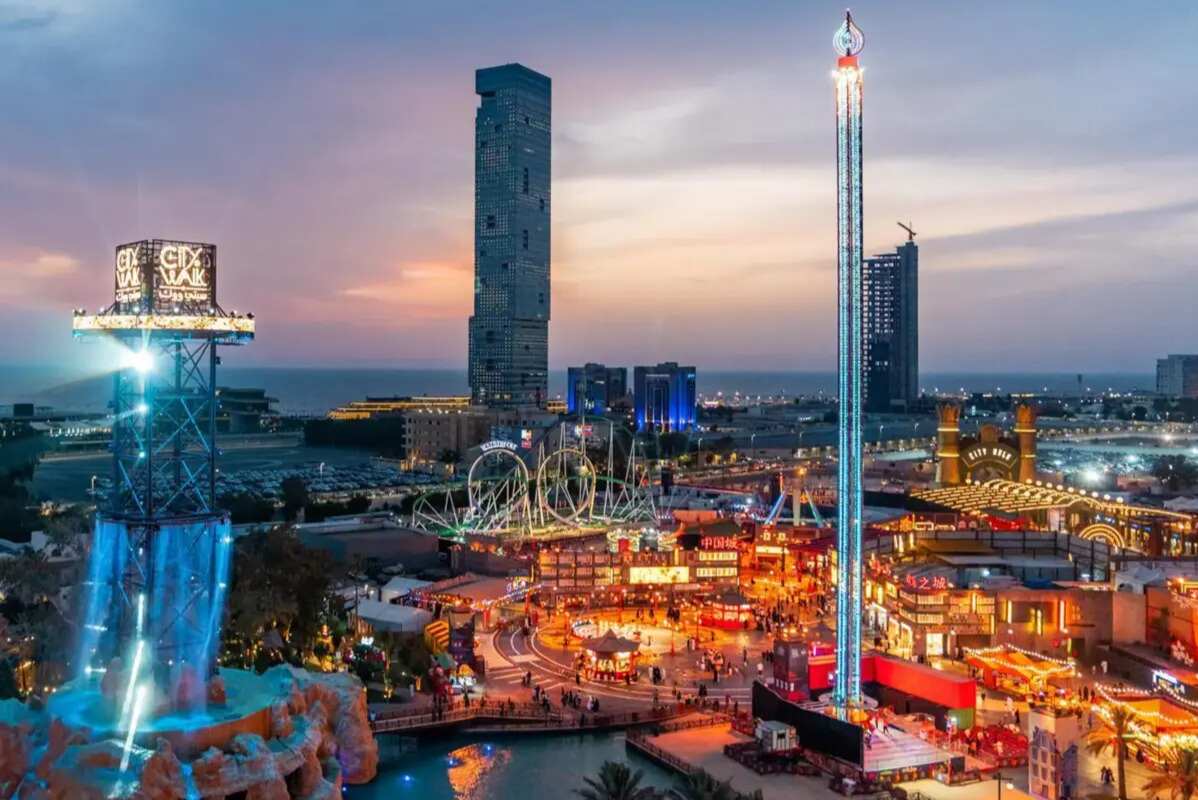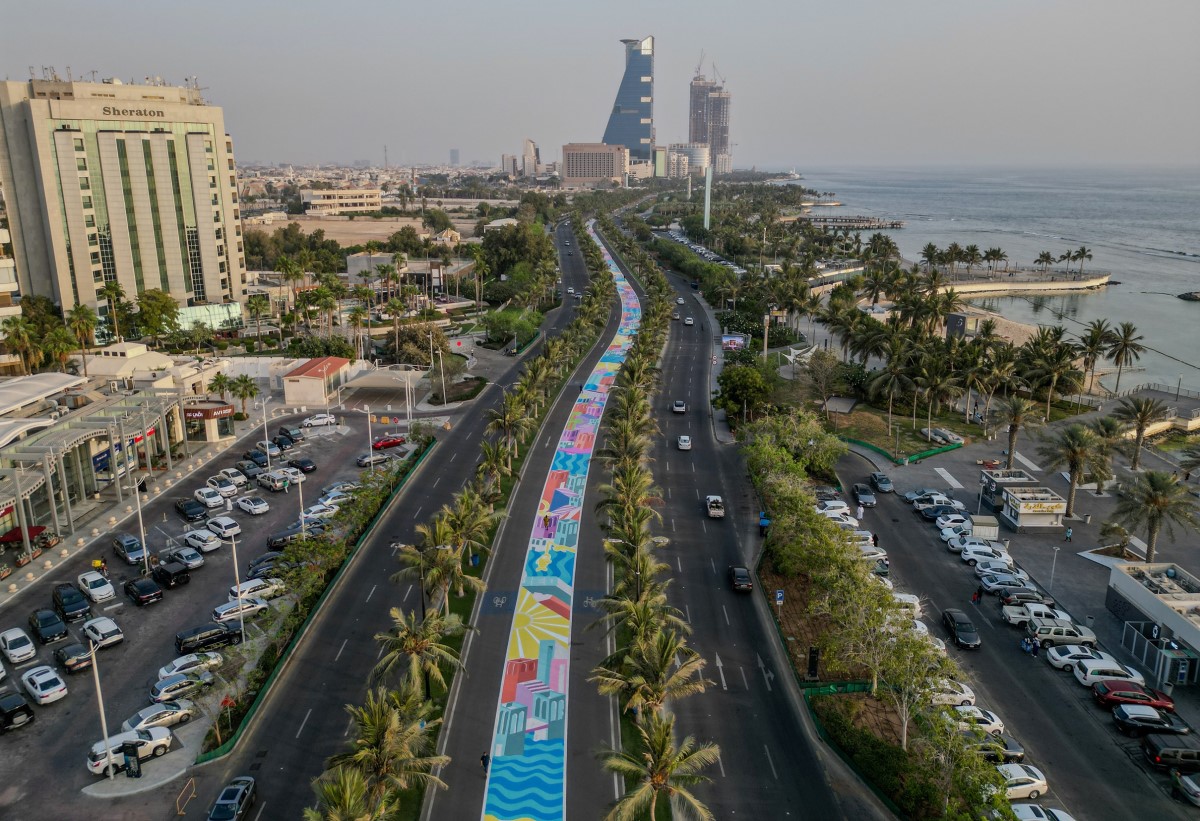



Jeddah, a Saudi Arabian port city on the Red Sea, is a modern commercial hub and gateway for pilgrimages to the Islamic holy cities Mecca and Medina. Resort hotels, beaches and outdoor sculptures line the Corniche, a seafront promenade anchored by the iconic King Fahd’s Fountain. The city’s Al-Balad historic district dates to the 7th century and retains traditional homes built from coral. ― Google
The best time to visit Saudi Arabia is during the cooler months from November to March. During this period:
Weather is pleasant and ideal for sightseeing, desert excursions, and exploring cities.
Daytime temperatures typically range between 15°C to 30°C (59°F to 86°F).
Key events include:
Riyadh Season (a months-long entertainment and cultural festival, typically from October to March).
Winter at Tantora (an arts and culture festival in AlUla).
Avoid the summer months (May to September) as temperatures can exceed 45°C (113°F), especially in central and eastern regions.
Saudi Arabia is well connected by air, and here are common ways to reach the country:
Saudi Arabia has several major international airports:
King Khalid International Airport (RUH) – Riyadh
King Abdulaziz International Airport (JED) – Jeddah (gateway for pilgrims visiting Mecca)
King Fahd International Airport (DMM) – Dammam
Most major airlines fly into Saudi Arabia, including:
Saudi Airlines (Saudia)
Emirates, Qatar Airways, Turkish Airlines
British Airways, Lufthansa, Air France, etc.
Saudi Arabia shares borders with:
UAE, Bahrain, Qatar, Kuwait, Oman, and Jordan – some travelers enter by road, though border crossings have restrictions and formalities.
Tourist visas are available online through the Saudi eVisa portal for many nationalities.
Umrah/Hajj pilgrims require special pilgrimage visas, available through approved agents.
AlUla & Hegra (Madain Saleh)
UNESCO World Heritage Site with ancient Nabatean tombs similar to Petra.
Stunning rock formations and desert landscapes.
Mecca (Makkah)
The holiest city in Islam; open only to Muslims.
Features the Masjid al-Haram and the Kaaba.
Medina (Madinah)
Second-holiest city in Islam; also open only to Muslims.
Prophet’s Mosque (Al-Masjid an-Nabawi) is a must-visit for pilgrims.
Riyadh
Capital city with modern towers and cultural gems.
Visit National Museum, Al Masmak Fort, and Kingdom Centre Tower.
Jeddah
Red Sea coastal city known for its historic Al-Balad district, Corniche, and Floating Mosque.
Gateway for Mecca pilgrims.
Edge of the World (near Riyadh)
Breathtaking cliff with panoramic desert views.
Abha & Asir Region
Mountainous and green, with cool weather, cable cars, and Rijal Almaa heritage village.
Diriyah
Historical birthplace of the Saudi state, with ongoing restoration and cultural events.
Desert Safari & Dune Bashing – Especially around Riyadh and AlUla.
Scuba Diving or Snorkeling – In the Red Sea (Jeddah or Yanbu).
Cultural Festivals – Like Riyadh Season, Winter at Tantora, and Janadriyah Festival.
Shopping – From luxury malls to traditional souks (markets) like Souq Al Alawi in Jeddah.
Hiking & Camping – In the Asir mountains or Edge of the World.
Explore Historic Sites – Such as Diriyah, Dumat al-Jandal, and Qasr Marid.
Try Local Cuisine – Dishes like kabsa, mutabbaq, mantu, and dates with Arabic coffee.
Saudi Arabia offers a full range of options:
Ritz-Carlton (Riyadh)
Narcissus Hotel (Riyadh)
Shangri-La (Jeddah and Riyadh)
Banyan Tree AlUla – high-end desert resort.
Hilton, Hyatt, Holiday Inn, Novotel, etc. in major cities.
Business hotels near city centers or attractions.
OYO, Al Eairy Apartments, and smaller local chains.
Some Airbnb options available, especially in Jeddah and Riyadh.
Kabsa – National dish made of rice, meat (usually lamb or chicken), and spices.
Mandi – Yemeni-influenced rice dish with slow-cooked meat.
Mutabbaq – Stuffed pan-fried bread, often filled with meat, vegetables, or egg.
Harees – A hearty wheat and meat dish, especially popular during Ramadan.
Jareesh – Cracked wheat cooked with meat or chicken and yogurt.
Dates & Arabic Coffee (Gahwa) – Commonly served as a sign of hospitality.
Samboosa – Similar to samosas, typically filled with meat or vegetables.
Riyadh:
Al Orjouan (The Ritz-Carlton) – Lavish international and Saudi buffet.
Najd Village – Authentic local cuisine in a traditional setting.
Nozomi – Upscale Japanese restaurant.
Zafran Indian Bistro – Well-loved Indian fusion food.
Jeddah:
Tamatim Basal – Great for traditional Hijazi food.
Shobak – Modern twist on pies and pastries.
Al Nakheel – Lebanese food with Red Sea views.
Twina Seafood – Fresh seafood near the beach.
AlUla:
Heart of Oasis – Farm-to-table dining experience.
Suhail – Elegant spot offering elevated Saudi cuisine.
Islam plays a central role in daily life; prayer is observed five times a day.
Modesty in dress is encouraged. Men wear the thobe, and women wear the abaya (though foreigners are no longer legally required to wear it).
Public display of affection is discouraged.
During Ramadan, eating, drinking, or smoking in public during daylight hours is discouraged.
Guests are often offered dates and Arabic coffee.
It’s polite to accept refreshments and to compliment the host.
Arabic is the official language; English is widely spoken in cities, especially in business and hospitality.
Falconry, camel racing, and poetry are valued parts of cultural heritage.
Majlis culture – A traditional gathering space for socializing and decision-making.
Recent years have seen a boom in concerts, cinemas, and mixed-gender events.
Women can now drive and attend public events, reflecting ongoing modernization.